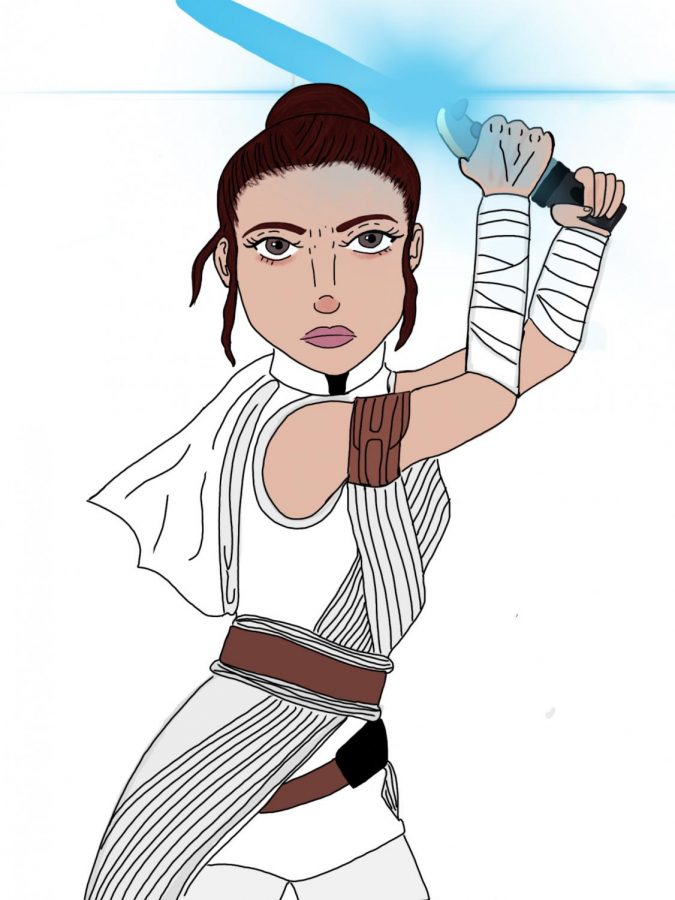Star Wars: The Destruction of Hope
January 20, 2020
This article contains spoilers for “Star Wars: The Rise of Skywalker.”
The final episode of the Skywalker saga has been unleashed upon the world, and with it the “Star Wars” sequel trilogy is complete. As if terrified by the negative reaction of many fans to “The Last Jedi,” “The Rise of Skywalker” attempts to undo much of what made the saga’s previous entry great.
“The Last Jedi” asserted something special in the grand narrative of the Skywalker saga. Rey’s struggle in “The Force Awakens” and the majority of “The Last Jedi” involved finding her place in the galaxy. She even tells Luke that the reason she sought him out was so someone could “show (her) place in all of this.” Rey was terrified of the thought that she was nobody. In a story so vast that it spans a galaxy, Rey feels as if she does not matter without some connection to the figures from the legendary stories she has heard about the struggle between dark and light.
Kylo Ren ultimately reveals to Rey that she was, in fact, no one. She was not Rey Skywalker. She was definitely not Rey Palpatine. She was Rey, daughter of space scum, sold into indentured servitude on Jakku for drinking money. Her parents were not mighty heroes or infamous villains; they were “filthy junk traders.” Despite this, she assumed the role of hero, asserting her importance in the galactic conflict despite not having any familial claim to herodom. “The Last Jedi” made clear that anyone can be a hero so long as they have the will to fight for what is right.
“The Rise of Skywalker” took this message and crushed it.
Rey is no longer a nobody. Rey is a Palpatine, granddaughter of the Emperor and heiress to the throne of the Galactic Empire and the Sith. Rey, instead of inserting herself into the Skywalker story and becoming a hero on her merit as an individual, must run away from the evil in her bloodline. In a pivotal moment, Rey, consumed by anger at the sight of Kylo Ren, loses control of her force abilities while attempting to save Chewbacca. She shoots lightning from her fingertips, appearing to have destroyed the ship Chewie was carried in. This could have been an interesting idea to explore, as Rey learns the importance of controlling her anger to prevent herself from falling to the dark side.
However, the use of force lightning in the movie is mostly meant as a callback to the Emperor’s force abilities, and makes it seem as if Rey’s pull to the dark side is meant to be a result of her family connection, not any personal failure. Rey reflects upon this in a conversation with Finn, saying that she feels no one knows who she truly is. This is inconsistent with Rey at the end of “The Last Jedi,” who has accepted that she truly is “just Rey.” No longer “just Rey,” she deals with an inner struggle with the dark side as a result of her relation to Palpatine, not anything she could control as an individual.
In the final scene of the film, Rey runs from her true family history and calls herself “Rey Skywalker,” as if admitting that she is truly Palpatine would define her as evil. Rey’s heroic actions don’t matter; all that matters is who she was related to.
For a saga that seems to proclaim hope, the final film leaves us with a message of despair, where one’s course of action and fate is inevitably limited by a past out of one’s control.










